
Original Article

QoS analysis of codecs and protocols used in VoIP Systems
Análise de QoS dos codecs e protocolos utilizados em Sistemas VoIP
Análisis de QoS de codecs y protocolos utilizados en sistemas VoIP
Joaquim Ulysses1 https://orcid.org/0009-0001-8453-8750
Hermenegildo Cassoada2 https://orcid.org/0009-0004-3787-7188
Ngombo Armando3 https://orcid.org/0000-0001-7493-4365
1Gregorio Semedo University, Luanda-Angola. engulisses.28@gmail.com
2Development & Innovation Section, eSupport Telecom. Luanda-Angola. 1000012876@ucan.edu
3Department of Computer Engineering, Kimpa Vita University, O77 Kondo Benze, Uige -Angola. ngombo@ieee.org
Received: November 24, 2024
Accepted: December 15, 2024
ABSTRACT
The study reported in this article aimed to evaluate the main Quality of Service (QoS) parameters in VoIP (Voice over Internet Protocol) systems, through a practical case study, quantifying the data obtained in several test scenarios to propose solutions that serve as reference in the selection of technologies to be used in VoIP system projects with IPBX (Internet Private Branch Exchange). The methodology used in terms of its nature is applied research, which allowed generating a practical solution to the problem. As for the procedure, it was a practical experiment, since it allowed manipulating variables related to QoS parameters with network traffic analysis tools, in order to compare them. The approach to the problem was based on a qualitative-quantitative analysis, supported by quantifiable indicators. Despite the influence of voice compression codecs and signaling protocol, it was found that other aspects such as bandwidth, connection type and network equipment technology are determining factors for the assessment of QoS in VoIP networks. Therefore, future studies are recommended to better evaluate the influence of these factors as well as the type of connection, QoS guarantee methods and equipment technology.
Keywords: Analysis of QoS, Codecs, IPBX, VoIP.
RESUMO
O estudo reportado neste artigo teve como objectivo avaliar os principais parâmetros de Qualidade de Serviço (QoS) em sistemas VoIP (Voice over Internet Protocol), através de um caso prático, quantificando os dados obtidos em vários cenários de testes para propor soluções que sirvam de referência na selecção das tecnologias a serem utilizadas em projectos de sistema VoIP com IPBX (Internet Private Branch Exchange). A metodologia utilizada quanto a sua natureza é a pesquisa aplicada que permitiu gerar a solução do problema de forma prática. Quanto ao procedimento foi um experimento prático, pois permitiu manipular variáveis relacionadas aos parâmetros de QoS com ferramentas de análise de tráfego de rede, a fim de fazer a comparação dos mesmos. A abordagem do problema baseou-se em uma análise quali-quantitativa, apoiados por indicadores quantificáveis. Apesar da influência dos codecs de compressão de voz e do protocolo de sinalização, constatou-se que outros aspectos como a largura de banda, tipo de conexão e a tecnologia dos equipamentos de rede, são factores determinantes para a avaliação de QoS em redes VoIP. Por conseguinte, recomenda-se futuros estudos que avaliem melhor a influência destes factores bem como o tipo de conexão, métodos de garantia de QoS e a tecnologia dos equipamentos.
Palavras-Chave: Análise de QoS, Codecs, IPBX, VoIP.
RESUMEN
El estudio presentado en este artículo tuvo como objetivo evaluar los principales parámetros de Calidad de Servicio (QoS) en sistemas VoIP (Voz sobre Protocolo de Internet), a través de un caso práctico, cuantificando los datos obtenidos en varios escenarios de prueba para proponer soluciones que sirvan como referencia en la selección de tecnologías a ser utilizadas en proyectos de sistemas VoIP con IPBX (Internet Private Branch Exchange). La metodología utilizada en cuanto a su naturaleza fue una investigación aplicada que permitió generar una solución práctica al problema. En cuanto al procedimiento, se trató de un experimento práctico, que permitió manipular variables relacionadas a parámetros QoS con herramientas de análisis de tráfico de red, con el fin de compararlas. El planteamiento del problema se basó en un análisis cualitativo-cuantitativo, apoyado en indicadores cuantificables. A pesar de la influencia de los codecs de compresión de voz y del protocolo de señalización, se encontró que otros aspectos como el ancho de banda, el tipo de conexión y la tecnología del equipo de red son factores determinantes para la evaluación de la QoS en redes VoIP. Por lo tanto, se recomiendan estudios futuros para evaluar mejor la influencia de estos factores, así como el tipo de conexión, los métodos de garantía de QoS y la tecnología de los equipos.
Palabras clave: Codecs, QoS, IPBX, VoIP, Proctocolos.
INTRODUCTION
In the field of voice over IP (VoIP) communications, different solutions have emerged, among which, currently, those based on IPBX or IP PABX are the most popular. However, one of the challenges continues to be ensuring quality of service (QoS) because, for example, one of the difficulties is selecting the requirements that, given the diversity of solutions available on the market, meet the needs of users. To this end, a detailed study of network parameters, transport protocols, codecs and testing are required, comparing the traffic generated on the network, in order to define standards for these types of solutions.
With the expansion of VoIP services in corporate environments, the search for solutions that offer QoS suited to the needs of organizations is increasingly intensifying (Neyra, Irizar, & Calderón, 2017). Several studies have been carried out with the aim of defining the main QoS factors in VoIP systems. Adhilaksono & Setiawan (2021) present the main metrics for assessing QoS and the parameters that define it and identify the elements involved in guaranteeing it, namely: protocols, physical devices, transmission media, as well as network characteristics such as bandwidth, Jitter and delays.
In this article, we present an experimental study carried out in a laboratory environment that allowed us to analyze the QoS of the main VoIP signaling protocols and the most common free license codecs on the market, through communication tests using softphones installed on different devices and Asterisk IPBX.
The sequence of this article is structured as follows: Section 2 presents the methodology used to select studies on the topic addressed. Section 3 presents the results obtained and Section 4 discusses them. Finally, Section 5 presents our conclusions and recommendations for future work.
MATERIALS AND METHODS
In terms of its nature, we adopted an applied research approach with the aim of generating knowledge for practical application and aimed at solving specific problems. As for the method, we opted for an experimental approach, where, through a practical case study, using virtualization, we worked with variables related to QoS parameters, network traffic analysis tools, as well as different data transport protocols, in order to compare them. Finally, regarding the way of approaching the problem, we proposed a qualitative-quantitative analysis, in order to obtain accurate results, supported by quantifiable indicators and validated by the Quality of Experience (QoE) of the end users of the VoIP system, whose data were processed and presented in tables.
We adopted a client-server network scenario to perform real-world tests and quantify the QoS parameters obtained in each configuration model, as illustrated in Figure 1. Initially, we selected the equipment and software required for the different test scenarios. During the tests, we used Wireshark (a packet sniffer software) to capture the analyzed packets, while Asterisk PABX and SIPp were used to provide the voice service. The service was accessed via Zoiper softphones installed on the client devices, and finally, the R studio environment was used for data analysis. A baseline scenario, illustrated in Figure 2, was configured with the configurations made on the Asterisk VoIP server and on the client devices, and then the tests were performed to evaluate the relevant factors in the performance of this communication service. The softphone used is free, but with limitations on the use of codecs. It was only possible to use the GSM, uLaw, aLaw, speex and iLBC30 codecs. The main features of the server are: 4 GB of RAM, 1 core with 2 GHz and a 100 Mbps interface.
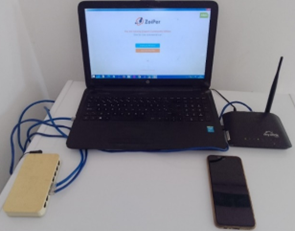
Fig. 1-Physical topology of the test environment
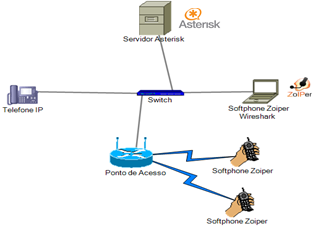
Fig. 2-Test environment architecture
RESULTS
This section presents the results of the tests performed in different scenarios, changing some parameters and components in each one. The tests performed had an average call duration of 40 seconds, as this was enough time to collect an average of 3000 RTP packets in our sample. Therefore, all tests were analyzed with the same amount of traffic. In all scenarios, tests were performed with the two signaling protocols covered in this study (SIP and IAX). During the tests, the Codecs and the signaling protocol were modified, as detailed below.
Calls with the SIP protocol
In the first scenario, connections were made between two end devices using the SIP protocol and with the hardware characteristics as described below. The codecs used were: G.711 (uLaw and aLaw), Gsm, Ilbc, Speex. And in the second scenario, connections were made using the IAX protocol with the same codecs. The results obtained for this series of tests are shown in Table I and Table II.
Table I - Scenario 1.a Results
Parameters |
uLaw |
aLaw |
GSM |
iLBC |
Speex |
Packet loss (%) |
0 |
0 |
0 |
0 |
0 |
Jitter (ms) |
20 |
20 |
16 |
20 |
12 |
Sent Bitrate (kb/s) |
82 |
83 |
33 |
26 |
29 |
Received Bit Rate (kb/s) |
83 |
84 |
33 |
26 |
29 |
Throughput |
82.5 |
83.5 |
33 |
26 |
29 |
QoE Prediction (0-5) |
4.5 |
4.6 |
5 |
4.47 |
5 |
Table II-Scenario 2a Results
Parameters |
ULaw |
aLaw |
GSM |
iLBC |
Speex |
Packet loss (%) |
0 |
0 |
0 |
0 |
5.3 |
Uplink jitter (ms) |
0.73 |
0.95 |
0.78 |
0.77 |
0.9 |
Downlink jitter (ms) |
21.3 |
21.5 |
21 |
18.1 |
20.6 |
System Jitter (ms) |
11 |
11.22 |
10.9 |
9.4 |
10.8 |
Sent Bitrate (kb/s) |
83 |
84 |
49 |
36 |
30 |
Received Bitrate (kb/) |
44 |
48 |
34 |
27 |
30 |
Throughput |
63.5 |
66 |
4.5 |
31.5 |
30 |
Uplink delay (ms) |
0.6 |
0.63 |
0.07 |
0 |
1.33 |
Downlink delay (ms) |
18.5 |
17.5 |
18.5 |
19.3 |
26.6 |
Delay |
9.6 |
9.1 |
9.3 |
9.7 |
14 |
Latency |
19 |
18.1 |
18.6 |
19.3 |
28 |
Quality Level (0-5) |
5 |
5 |
5 |
5 |
3 |
Calls with the IAX Protocol
In this stage of the tests, the IAX protocol with new extensions was configured on the VoIP server and softphones. In this scenario, similar to the architecture with SIP, only the bitrate, jitter (instantaneous) and QoE prediction were captured as in Table III and Table IV.
Table III-Scenario 1.b Results
Parameters |
uLaw |
aLaw |
GSM |
iLBC |
Speex |
Packet loss (%) |
0 |
0 |
0 |
0 |
0 |
Jitter (ms) |
16 |
16 |
21 |
22 |
16 |
Sent Bitrate (kb/s) |
80 |
78 |
30 |
24 |
26 |
Received Bitrate (kb/) |
82 |
81 |
30 |
25 |
26 |
Throughput |
81 |
79.5 |
30 |
24.5 |
26 |
Quality Level (0-5) |
5 |
5 |
4.17 |
4.4 |
5 |
Table IV-Scenario 2.b Results
Parameters |
uLaw |
aLaw |
GSM |
iLBC |
Speex |
Packet loss (%) |
0 |
0 |
0 |
0 |
0 |
Jitter (ms) Sending and receiving |
0.02 |
0.02 |
0.02 |
0.002 |
2.5 |
Sent Bitrate (kb/s) |
82 |
80 |
31 |
25 |
25 |
Received Bitrate (kb/) |
81 |
78 |
30 |
24 |
26 |
Throughput |
81.5 |
79 |
30.5 |
24.5 |
25.5 |
Delay (ms) |
0.32 |
0.37 |
0.35 |
0.3 |
19.5 |
Quality Level (0-5) |
5 |
5 |
5 |
3.75 |
4 |
SIP and IAX Calls with Transcoding
In this step, the IAX protocol was configured on one Zoiper softphone and the SIP protocol on the other, and in relation to the codecs, calls were made with all codecs. In this scenario, the evaluation was based on verifying the compatibility between the codecs. It was found that there is compatibility between some codecs as highlighted in Table V, however, between the iLBC codec and the G711(ulaw), as in Table VI.
Table V-Compatibility using SIP
SIP |
Compatibility |
||||
ulLaw |
uLaw |
aLaw |
GSM |
iLBC |
Spee x |
aLaw |
uLaw |
aLaw |
GSM |
iLBC |
Spee x |
GSM |
uLaw |
aLaw |
GSM |
iLBC |
Spee x |
ulLaw |
uLaw |
aLaw |
GSM |
iLBC |
Spee x |
aLaw |
uLaw |
aLaw |
GSM |
iLBC |
Spee x |
Table VI-Compatibility using IAX
IAX |
Compatibility |
||||
ulLaw |
uLaw |
aLaw |
GSM |
iLBC |
Speex |
aLaw |
uLaw |
aLaw |
GSM |
iLBC |
Speex |
GSM |
uLaw |
aLaw |
GSM |
iLBC |
Speex |
iLBC |
uLaw |
aLaw |
GSM |
iLBC |
Speex |
Speex |
uLaw |
aLaw |
GSM |
iLBC |
Speex |
In the transcoding tests carried out with the IAX protocol, it was found that there is in fact incompatibility between some codecs as shown in table 13.
With the results obtained above, we limited ourselves to carrying out the QoS evaluation in a hybrid environment (SIP and IAX) only with the GSM and G711 codecs as they were the ones that presented the greatest consistency as shown in the preliminary tests highlighted in Table VII above.
Table VII-Transcoding results
Parameters |
uLaw |
aLaw |
GSM |
Packet loss (%) |
0 |
0 |
0 |
SIP uplink jitter (ms) |
0.8 |
0.7 |
0.7 |
Downlink jitter (ms) SIP |
7.3 |
8 |
20.8 |
Jitter |
8.1 |
8.7 |
21.5 |
IAX Jitter (ms) |
0.04 |
0.02 |
0.04 |
Bit rate on the SIP side (kb/s) |
85 |
140 |
57 |
IAX bit rate |
174 |
150 |
50 |
SIP uplink delay |
0.73 |
15.6 |
0.7 |
SIP downlink delay |
13.6 |
59.1 |
15.7 |
delay sip |
7.2 |
37.4 |
8.2 |
sip latency |
14.3 |
74.7 |
16,439 |
Delay sideIAX |
0.46 |
1.58 |
0.39 |
Influence of the server's physical characteristics
At this stage, the influence of the server's physical characteristics, such as CPU and memory capacity, on call quality was analyzed. Simultaneous calls were made for stress/load and performance testing purposes, which allowed us to assess the technologies that presented the best QoS results in relation to call demand. Figure 3 shows that 15% of RAM was consumed during the call. However, it was found that calls made in scenarios configured with the SIP and IAX protocols consumed memory and processing resources equally, with no significant differences.
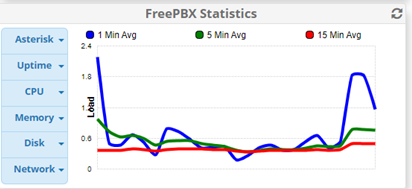
Fig. 3-CPU Monitoring on the Server
DISCUSSION
QoS Analysis
In the different test scenarios, there was no significant packet loss and we observed that regardless of the type of codec and/or signaling protocol used, if the network is properly implemented this parameter will have little influence on the degradation of QoS. Regarding delay, the IAX protocol presented the best values for delay in all codecs. The jitter value was always higher in the direction from the server to the client machine, as opposed to the direction from the client machine to the server, where the jitter values tend to zero. Thus, we can conclude that hardware resources influence the transmission and reception capacity of packets, generating delay and consequently in the quality of the connection.
The data collected on the transfer rates in each codec allowed us to conclude that the bitrate influenced the quality of the calls. The codecs that operated with lower bitrates tended to use comprehension techniques that resulted in loss of quality with echoes during the calls. Our study allowed us to determine that the VoIP communication system with Asterisk allows calls to be made between different codecs, including: G.711 ulaw and alaw, GSM, ILbc and Speex, with transcoding occurring without major loss in the quality of the communications.
The Asterisk Server automatically transcodes whenever one of the participants sends a signal using a codec that is not compatible or has not been configured on the other participant. In general, calls made using the IAX protocol presented better quality of service in terms of delay. Tests showed a certain incompatibility between the IAX protocol and the Speex codec, as calls dropped very frequently and when they did, the quality and QoS parameters were poor.
Correlation between the variables studied
This section presents the results of correlation tests between different QoS parameters using the Pearson method, with the aim of finding a statistical measure that indicates the strength and direction of the linear relationship between two or more parameters. The Pearson coefficient obtained between latency and delay was the most notable in this test, as it showed a perfect positive linear correlation, which means that as the delay increases, the latency also increases in the same proportion.
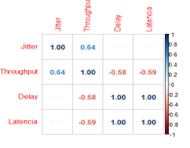
Fig.4-Correlation matrix between the parameters of scenario 2.a
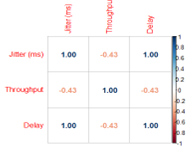
Fig. 5-Correlation matrix between delay and throughput

Fig. 6-Correlation matrix between all parameters

Fig. 7-Correlation matrix between delay, jitter and bitrate
The Pearson coefficient obtained between jitter and delay was the most prominent in Scenario 1b, therefore, between 2 Mobile Phones with IAX as in Figure 5. In fact, it showed a perfect positive linear correlation, which means that as jitter increases, delay also increases in the same proportion. The same was not true between delay and throughput (-0.43), indicating a moderate negative correlation which means that as delay increases, throughput decreases moderately to weakly.
In the transcoding scenarios, the perfect positive linear correlation between latency and delay and the weak correlation between jitter and bitrate were confirmed, indicating that there is not much relationship between bitrate and jitter (0.0.81) as in Figure 4. In relation to delay, a very strong negative correlation with bitrate was observed, which means that the increase in connection delay significantly compromises the bitrate and consequently the connection quality.
In Figure 6, we can see the correlation between all the parameters involved, giving a general perception of how they relate. In the device configured with the IAX protocol, there was a perfect negative correlation between jitter and delay, meaning that low variations in delay (jitter) tend to have a constant delay, significantly improving the quality of communications, as shown in Figure 7. Delay and bitrate also had a weak positive correlation, as in the SIP device, which for our experiment ends up proving that the signaling protocol has little influence on the variation in delay.
Multiple linear regression analysis
A regression analysis was performed between the QoS parameters that presented a strong correlation, taking into account the value of the correlation coefficient obtained in the previous section, and thus analyzing which parameters influence the others the most. The approach was based on multiple linear regression, as we analyzed the relationship between a dependent variable (latency) and several independent variables (delay, throughput, jitter). The Estimate value shows the expected effect of each independent variable on the dependent variable. In this case, the analysis shows that only the delay (1.98) and the jitter (0.124) positively influence the increase in latency when the others assume a constant value.
The t-value is used to test the null hypothesis that the coefficient is equal to zero (i.e., the independent variable has no effect on latency). In the case under analysis, the delay with a value of 86.78 indicates very strong evidence against the null hypothesis, unlike jitter and throughput, which assume very low values. The p-value associated with the t-test for each coefficient tests the statistical significance of the independent variable (latency). If the p-value is less than a common significance level (usually 0.05), the independent variable is considered statistically significant. Thus, we have: (a) delay: a very low p-value (0.00734) indicates that the delay has a significant effect on latency; (b) Throughput: a p-value of 0.26753 also indicates significance, but less strong than the delay, as well as the jitter with 0.32211, with a p-value of little significance on latency.
The F statistic (6497) and its p-value (0.009119) indicate whether the overall model is significant. A high F-value and a very low p-value indicate that the model is significant as a whole. Thus, we can safely state that the parameters delay, throughput and jitter have a significant effect on latency. Multiple linear regression was tested where the dependent variable was throughput and the independent variables were delay and jitter.
Estimated Value: In this test, only the delay with a value of 394.97 has a positive influence when the jitter assumes a constant value. And the jitter with a negative value of -3055.94 also has an influence, but negatively, which means that the flow decreases as the jitter increases. The t-value, as explained previously, is used to test the null hypothesis that the coefficient is equal to zero (i.e., the independent variables have no effect on the flow). In the case under analysis, the delay with a value of 0.618 indicates very weak evidence against the null hypothesis, as does the jitter (-0.621). Regarding the p-value associated with the t-test for each coefficient, we thus have p-values of 0.599 and 0.598 for delay and jitter respectively, which indicate weak significance on the flow. The F statistic (0.4649) and its p-value (0.6826) indicate that the model in general is not very significant. Thus, we can safely state that the delay and jitter parameters had a weak and significant effect on the flow rate.
CONCLUSIONS
This paper presents a study on the evaluation of the QoS parameters that most influence the quality of voice packet transmission in IPBX-based VoIP networks. All codecs and protocols selected in this research were tested and data on the QoS parameters obtained in different scenarios were collected. Despite the influence of voice compression codecs and signaling protocol, it was found that other aspects such as bandwidth, connection type and network equipment technology are determining factors for the evaluation of QoS in VoIP networks. Correlation and linear regression tests allowed a better analysis of the relationship between the QoS parameters. However, it was not possible to perform tests with proprietary VoIP codecs and protocols, thus leaving open studies that can attest to their QoS in relation to the characteristics of the network where they are proposed to be implemented. Finally, this article is a reference for convergent network infrastructure projects, where the aim is to guarantee quality in voice transmission that have an IPBX such as Asterisk as the center of the VoIP architecture.
As a result of this work, we believe that with a study evaluating QoS factors that use proprietary codecs and protocols as research variables, it is possible to have a more comprehensive understanding in order to better classify those that best adapt to certain implementation scenarios. Therefore, we recommend studies that evaluate the influence of other QoS factors such as bandwidth, connection type, QoS guarantee methods and equipment technology. Finally, we propose future studies that evaluate all aspects mentioned in this work, which may follow the same evaluation model, but in a corporate test environment, that is, with the IPBX server hosted on distributed, dedicated, remote machines, with multiple end users.
REFERENCES
Aamir, M., & Zaidi, S. M. (2017). QoS Analysis of VoIP Traffic for different Codecs and Frame Counts per Packet in Multimedia Environment using OPNET. Karachi, Pakistan.
Adhilaksono, B., & Setiawan, B. (2021). A study of Voice-over-Internet Protocol quality metrics. Indonesia.
ALSHAHWAN, F., ALSHAMRANI, M., & AMER, A. A. (2018). Dynamic Novel Cross-Layer Performance Enhancement Approach for SIP over OLSR. IEEE ACCESS.
Ana, I. P. (2010). Implantação de Telefonia VoIP no Centro de Tecnologia da UFRJ. Rio de Janeiro.
Chakraborty, T., Ghosh, S., Barik, S., Kar, S., & Chatterje, S. (2020). VoIP-HDK2 A novel channel allocation technique for QoS aware VoIP communication over heterogeneous networks. Kolkata: Procedia Computer Science.
Dafalla, M. E., Mokhtar, R. A., b, R. A., Alhumyani, H., Abdel-Khalek, S., & Khayyat, M. (2022). An optimized link state routing protocol for real-time application over Vehicular Ad-hoc Network. Alexandria Engineering Journal.
Edan, N. M., Turner, S., Al-Sherbaz, A., & Ajit, S. (2016). Performance Evaluation of QoS Using SIP & IAX2 VVoIP Protocols with CODECS. Londres: SAI Computing Conference.
Magro, J. C. (2005). Estudo da Qualidade de Voz em Redes IP. Campinas.
Menezes, A. C., Machado, J. d., Nogueira, T. A., Ordonez, E. D., & Ribeiro, A. d. (2019). Técnicas para análise de desempenho em plataformas computacionais genéricas para uso de sistemas VoIP Open Source. Sergipe: IFS.
Neyra, J. M., Irizar, C. A., & Calderón, C. A. (Dezembro de 2017). Evaluación de QoE en servicios IP basada en parámetros de QoS.
Pal, D., Triyason, T., & Vanijja, V. (2017). Asterisk Server Performance under Stress Test. 17th IEEE International Conference on Communication Technology (p. 5). Bangkok, Thailand: IP Communications Laboratory.
Pantoja, M. R. (2017). Comparação De Infraestruturas Baseadas em SDN e Virtualização de Redes para Suporte a Serviços VoIP. Recife.
Pereira, R. S. (2015). Análise de desempenho e usabilidade em sistemas VoIP seguros.
Sankako, E. H. (2007). Diferenças entre Soluções VoIP com H.323 e SIP. Londrina.
Vieira, S. A. (2009). Realização de uma arquitectura Diffserv com configuração transparente de QoS. Lisboa.
Villarreal, M. A., Arroyo, J. B., Camarena, J. F., & Lira, L. A. (2019). Evaluación de una red inalámbrica de banda ancha para VoIP..
Declaration of conflicts of interest:
The authors of the article declare that there is no conflict of interest that would affect the publication of the article.
Authorship Contribution:
The authors also contributed to the conception, design and bibliographic research, which enabled the development and review of the content for final approval of the version to be published.
![]()
This work is under aCreative Commons Attribution-NonCommercial 4.0 International
License.